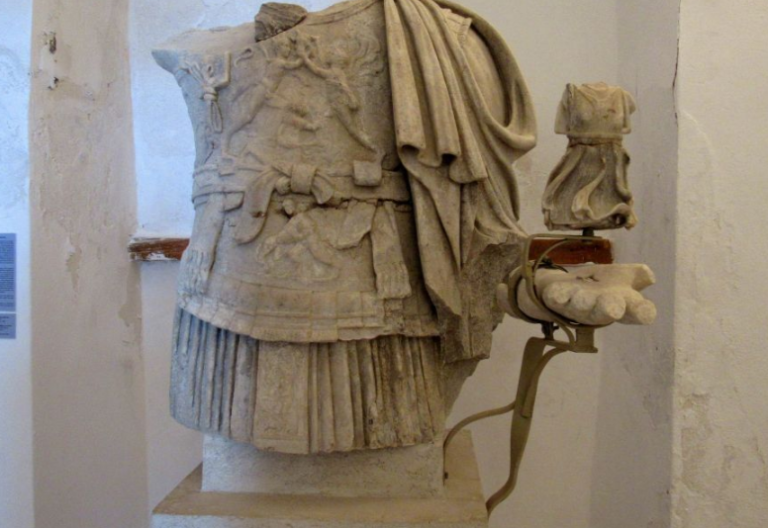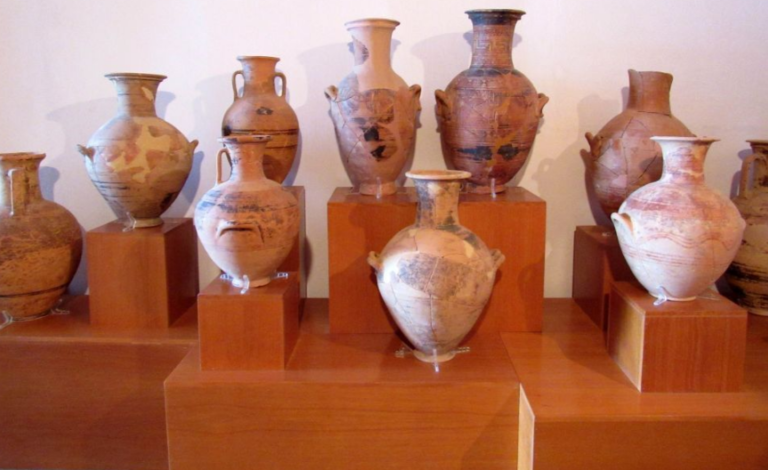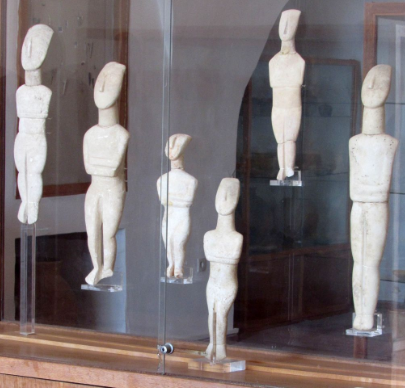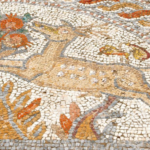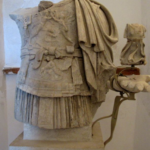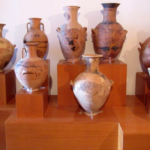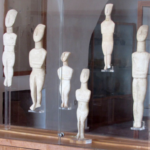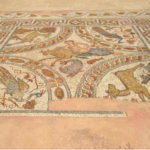
You are using the Free Edition of NaxosAPP. For extensive information on Naxos, GO PRIME with our comprehensive Greek Travel App featuring the full editions of Naxos and 25 more Greek islands & Athens.
The Archaeological Museum of Naxos is situated at the central square at the top of the Kastro. It is inside a beautiful 17th Century Venetian building, a perfect example of architecture during the Frankish period. It has five floors and was built to be a school for Jesuits eventually housing the School of Commerce in the late 19th Century and later becoming the Archaeological Museum in 1973 also being declared a historical monument since then.
All the findings of excavations carried out over the years are exhibited here at the Archaeological Museum. It houses everything from objects of everyday use to works of art dating from the Late Neolithic period to early Christian times. The Cycladic Civilization was at its peak of glory in the third millennium B.C and Naxos was a center of Cycladic art back then. Around this time there were Cycladic settlements along the east coast of Naxos and outside the town of Naxos at Grotta.
The museum houses an impressive collection of marble Cycladic statues, gold jewelry, vessels, marble and clay pots, wooden tools, funeral gifts that were found from the sites of these places. Many of the vessels are hand-made consisting of coarse grain clay sometimes decorated with a herringbone design.
The white marble Cycladic statues displayed here range from earlier simple violin shapes to the more detailed female forms with tilted flat heads, folded arms and legs slightly bent at the knees. The male forms are simpler and appear to be seated. Many scholars believe that this is because the female statues usually represented grave and fertility goddesses while the males were servant figures.
The museum also has an outstanding collection of Mycenaean pottery dating back to the second millennium B.C. Besides this, pottery, terra-cotta figurines and statues from the Bronze Age, Archaic period, Classical era, Roman Era and Hellenistic period can also be found here. Some of the interesting exhibits of the museum include:
• The Clay rhyton, a ritual vase form the early Cycladic period.
• A marble vase from the early Cycladic period.
• Vases from the early Cycladic period found on the island of Epano Koufonisi.
• Early Cycladic pyxis made of marble and schist from the cemetery at Aplomata
• Marble from early Cycladic era found at the cemetery at Keros
• Mycenaean jar found at the Aplomata cemetery decorated with an octopus design
• Mycenaean jug from the Kamini cemetery decorated with a scene of a circular dance.
• Four golden plaques retrieved from a child burial at the Kamini cemetery depicting the dead child.
• Golden jewelry from tombs at Tsikalario and Chora dated to the Geometric Period
• Torso of a Naxian kouros dated to the second half of the 6th Century B.C.
• Detail of a mosaic floor from Aplomata depicting a Nereid on a bull from the Roman period. Naxos has always been the center of art and architecture in Greece.
The Archaeological Museum has helped incredibly and beautifully to preserve this culture and history for the whole world to see for ages to come.
Sorry, no records were found. Please adjust your search criteria and try again.
Sorry, unable to load the Maps API.
[gd_maps]


